HOUS.E+ by Polifactory
Shanghai architects Polifactory have developed a concept for a rammed earth house that generates energy from a lake on its roof.
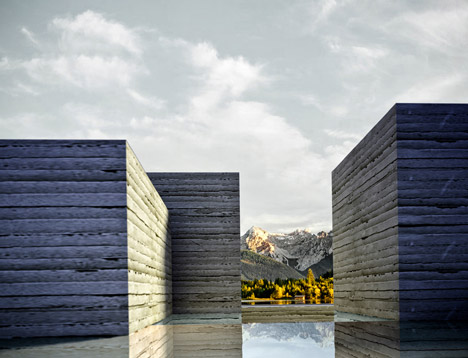
Designed for a rural site in Vancouver, the self-sustaining HOUS.E+ would use turbines embedded in the walls to produce electricity from water being pumped through a system of pipes.
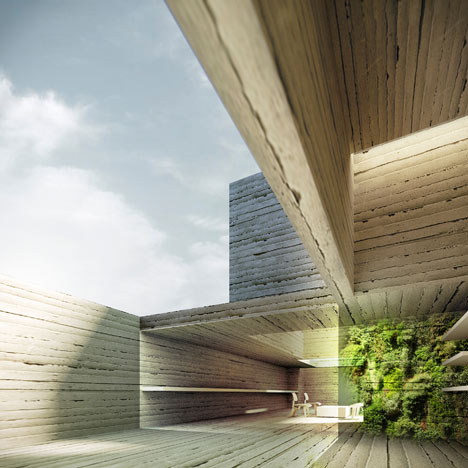
Additional electricity would come from photovoltaic panels on the rooftops of five blocks that rise above the water and any excess power could be fed back into the national grid.
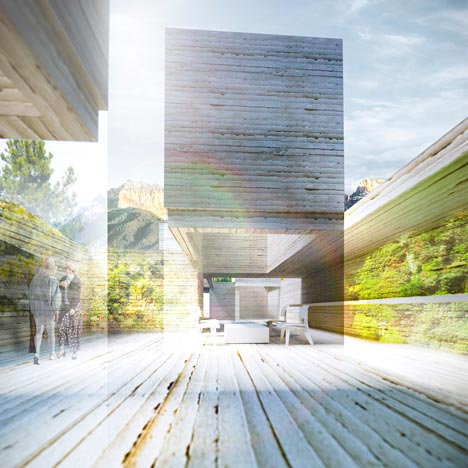
Rooms would be set 2.5 metres below ground level, where they would be heated in winter and cooled in summer from an underground pump that uses the surrounding earth as a heat source or sink.
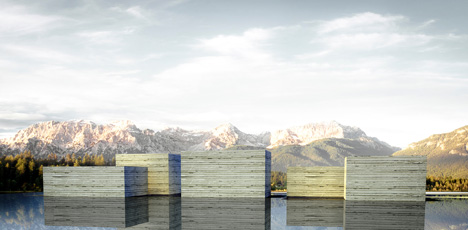
Two courtyards at this level would let daylight down onto the sunken floor, while more natural light would filter in through skylights.

Inhabitants would also be able to harvest their own food by cultivating an ecosystem of fish, seafood and plants beneath the surface of the water.

Polifactory developed the concept for a competition organised by The Architecture Foundation of British Columbia for a redesign of the typical regional house.
We also recently featured a self-sustaining house in rural China, which you can see here.
Here's some text from Polifactory:
Hous.E+ is designed to combine new and old techniques in order to create a not only a resourceful building regarding energy efficiency and sustainability but also well equipped to actively respond to future demands of smart grid systems where energy surplus is distributed and agriculture within the city is a reality.
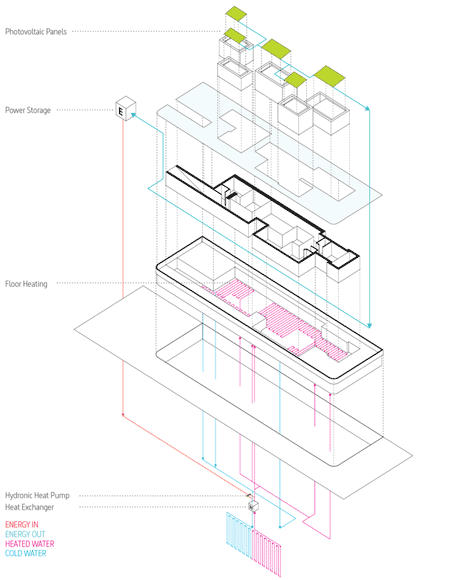
Above: solar energy and geothermal heat exchange
Designed for a competition in Vancouver, called “100 Mile House”, this project is more than just a concept, but reality with a twist. Therefore, it is based upon existing smart technologies, but goes a step further on solutions that haven't been explored so far. In this house water is not only stored and re-used but also is part of a cycle that generates power throughout a series of wall embedded micro hydro-turbines. Unnecessary transportation of materials is avoid making a significant difference into the overall carbon foot print emission balance.
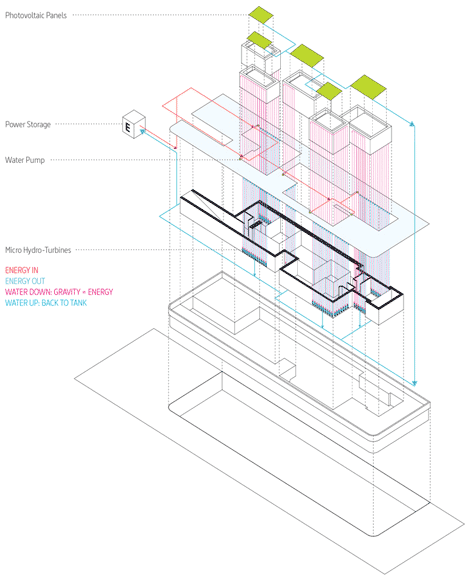
Above: hydropower
Hous.E+ is build upon a rammed earth wall technique that is unaffected by rain, fire or pests, plus it doesn't require any further finishing. The walls act like breathing structures, allowing air exchange without significant heat loss, working naturally as a thermal mass, storing heat in winter and rejecting in the summer, eliminating the need for air conditioning.
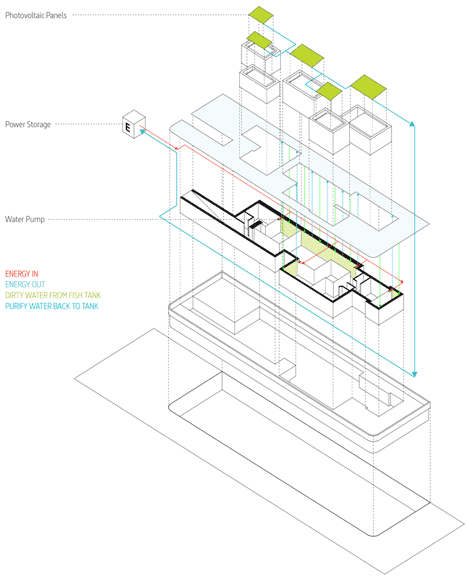
Above: aquaponics healthy food growth
Hous.E+ is set to produce more energy than it consumes.